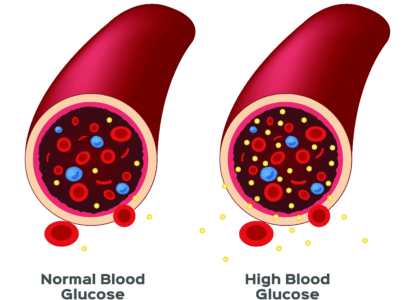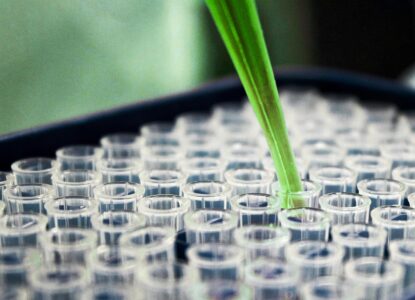Is Gout Hereditary? 3 Genes That Drive Risk

It’s been estimated that gout is 65% heritable, and runs in families.
What causes this?
An inability to deal with the waste products of high purine foods, and purines made by the body.
The body produces uric acid when it breaks down purines, which are found in certain foods and drinks, such as red meat, seafood, and alcohol. When the kidneys can’t eliminate enough uric acid, it can build up and form sharp, needle-like crystals in the joints, leading to a gout attack.
Gout is a type of arthritis that occurs when uric acid crystals accumulate in the joints, causing inflammation, pain, and swelling, often in the big toe.
Gout has been called “the disease of Kings,” due to its heavy lifestyle associations, but emerging research teaches us that risk goes beyond what you eat.
If you’re looking for an explanation for elevated uric acid levels and corresponding gout risk, there are some SNPs that could play a role.
In fact, evidence is emerging that gout may be driven more by genetics than by the strict diet protocols many focus on.
URAT1/SLC22A12
The first and potentially most interesting gene that can drive gout risk is located in the urate transporter 1 (URAT1) gene which is also called SLC22A12.
This protein’s primary function is to regulate the re-absorption of uric acid in the kidneys, so you can see how any changes in function could dramatically alter uric acid levels.
In this study, the authors identified three SNPs of real interest rs75786299, rs7929627 and rs3825017.
Of the three the first, rs75786299 (~30 times risk), had by far an away the strongest associated with elevated uric acid in the blood, which would be suggestive of reduced URAT1 activity, with the other two having a lesser but still significant effect on uric acid levels.
Most interestingly a particular combination of the three SNPs, known as a haplotype, showed a much larger (~90 times) risk than any one SNP alone. The individual risks and this haplotype are detailed in the table below. Importantly, whilst this single study showed a strong effect in a Korean population, other studies in Caucasian populations are less clear.
| Gene | SNP | Risk Allele | Gout risk (per risk allele) | Uric acid effect (per risk allele) |
|---|---|---|---|---|
| URAT1 | rs75786299 | A | Unknown | x32 risk for hyperuricaemia |
| rs7929627 | G | Unknown | x2 risk for hyperuricaemia | |
| rs3825017 | T | Unknown | x2 risk for hyperuricaemia | |
| Combination of above | A,G,T | Unknown | x92 risk for hyperuricaemia | |
| ABCG2 | rs2231142 | T | 1.7 x | Unknown |
| rs72552713 | A | 2.8 x | Unknown | |
| GLUT9 | rs16890979 | C | 1.7 x | + 0.47 mg/dl |
| rs6449213 | T | 2 x | + 0.02 mMol/l | |
| rs12498742 | A | 1.25 x (homozygote risk only) | Unknown | |
| SLC17A3 | rs1165205 | A | 0.15 x | Unknown |
ABCG2
There are a couple of other SNPs of interest as well.
rs2231142 in the ABCG2 gene is probably the most well known and has a strong association with the development of gout, as does rs72552713 which is also in the ABCG2 gene.
As with URAT1, ABCG2 also functions in the kidney where it functions to export urate into the urine, allowing its excretion.
The risk allele T of the rs2231142 SNP is very strongly associated with an increased risk of gout, with those homozygous for the risk allele having approximately 3.5 times the risk, and heterozygotes having roughly twice the risk16, an effect which several other studies have supported.
A similar effect for the risk allele A of rs72552713 has also been reported, although there is less supporting evidence in multiple populations.
GLUT9/SLC2A9
Finally, other SNPs in SLC2A9 rs16890979, rs6449213 and rs12498742 and SLC17A3 rs1165205 have also been associated with an increased risk of gout. SLC2A9, also known as GLUT9 is a major regulator of urate transfer in the kidneys, and so it is unsuprising that SNPs have been identified which increase risk.
Of these, rs16890979 is perhaps the most widely investigated and the risk C allele was associated with approximately a 3.5x increased risk of developing gout, through having serum levels approximately 0.5 mg/dl higher for each copy of the risk allele carried.
In closing
There is a strong hereditary component to developing gout, and knowing your status for the SNPs I detailed above can help determine whether high uric acid runs in the family or if lifestyle is primarily to blame.



